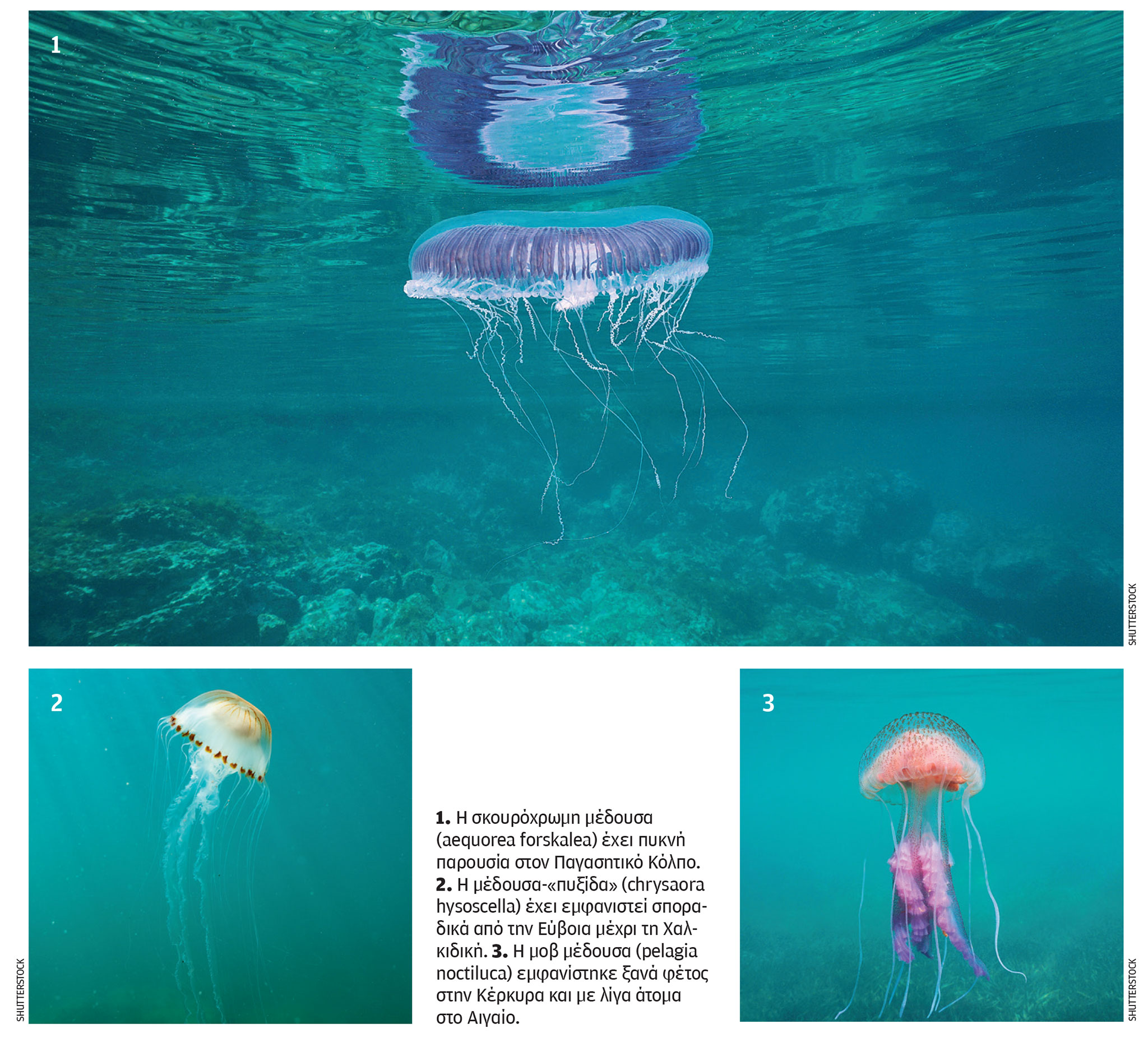
Of concern is the reappearance of jellyfish in various regions of the country, and North Ionian to focus on for now, as this is where most of the appearances were recorded purple jellyfish. However, it is believed that it is too early to assess the situation that will develop this summer. Purple jellyfish, sort of Pelagia noctiluca with a painful “sting” appeared in the sea areas north and east of Corfu, according to citizens’ records on a digital special platform Jellyfish of Greece-iNaturalist.
“So far there are four records from Corfu. It is noteworthy that on April 19, several purple jellyfish were seen in the Anemomylos area, which, judging by the coloration, seem to be young. Accordingly, we expect activity in the next period as well,” notes Christos Taqlis in “K”., marine biologist and administrator of the Hellenic Biodiversity Observatory. As he mentions, areas of the Ionian Sea, mainly in Corfu and Paxos, were put to the test last year, especially by the massive presence of populations of purple jellyfish, which largely remained in the winter. It should be noted that the current outbreak of pelagia noctiluca in the Ionian Sea began in the summer of 2021.
In the Aegean, reports of the presence of purple jellyfish this year are rare. “Last January there were two or three records in Attica, but as we saw from the photos, they were old jellyfish. We don’t have a new colony,” Mr. Taklis tells us.
“There are few records, and it is very important that almost everywhere they refer to one person or several people, and not to flocks of jellyfish, as we saw in previous years in the Aegean and Corinth Seas. I would say that the situation during this period remains normal, taking into account, of course, the absence of a systematic record. says Epaminondas to Christ “K”.director of research at the ELKETHE Institute of Oceanography.
According to Mr Christou, the two outbreaks that occurred in previous years in the Aegean and Ionian Seas occurred at different times and for different reasons and may affect different populations. In the Aegean, this phenomenon began earlier, in the fall of 2020. “From the first image this year, we would say that this particular outbreak of purple jellyfish is coming to an end, and this summer will probably be better than last. year. But we can’t be sure as there is no established pattern for the presence of jellyfish or the length of time an outbreak lasts,” adds Mr Christou.

“I would say that the situation during this period remains normal, taking into account, of course, the lack of systematic registration.”
How long until the next episode? “We used to see 5-10 years between two outbreaks. Will we stay with it or will there be densification due to climate change? For example, here in Malta we are seeing a resurgence of jellyfish again this year, even though it has only been two years since the previous outbreak. The rise in the temperature of the waters of the Mediterranean Sea, of course, creates a favorable environment for the growth of the purple jellyfish, which breeds at temperatures above 16 degrees Celsius. In our seas, temperatures are the same or even higher for long periods of time, so it is possible that hot spots are created for the development of jellyfish, ”explains Mr. Taklis.
This season, two more species of jellyfish appear in the sea waters of our country. According to several testimonies and some records, there is a significant presence of jellyfish of this species on the Medusa platform. aequorea forscalea in the Pagasitic Gulf. “This species is harmless, except when the person has an allergy problem. This is the period of seasonal appearance of Aequorea forscalea, which is not a cause for concern. Of course, swimming next to a jellyfish is unpleasant, but it is a harmless species,” notes Mr. Christou. According to Mr Taclis, almost “every year Pagasitikos, which is a semi-enclosed bay, experiences an upwelling phase. However, we estimate that it is a matter of days, a month at most, before specific jellyfish disappear from the surface, in many cases due to their sinking into deeper waters.”
If the dark-colored forscalea aquorea is harmless, then the bite of the jellyfish of the so-called “compass” (chrysaora hyssocella) is painful, like a purple jellyfish. It is a large jellyfish with a bell size of about 30 centimeters and is orange in color so that swimmers can spot it. According to the Medusa platform, this period appears in several places, from Evia to Chalkidiki.
“The good thing is that so far the reports are for sporadic cases and not for a systematic outbreak. In recent days, a fisherman from Pagasitikos has informed us of the presence of a specimen of chrysaora hysoscella. But we don’t have consistent reports. Usually during such a period we observe the appearance of this species,” says ELKETHE researcher Mr. Christou. In fact, as Mr Taklis points out, “we expect the compass jellyfish to disappear by the end of May/beginning of June.”
If it bites us
In case of a sting from a purple jellyfish or compass jellyfish, rinse the body with sea water to remove any remaining jellyfish tentacles. Then we apply a 1 to 1 mixture of sea water and baking soda to the bite site. Using a cortisone cream, we stop the action of the neurotoxin. If other symptoms appear, it is advisable to seek medical help.
Source: Kathimerini
Ashley Bailey is a talented author and journalist known for her writing on trending topics. Currently working at 247 news reel, she brings readers fresh perspectives on current issues. With her well-researched and thought-provoking articles, she captures the zeitgeist and stays ahead of the latest trends. Ashley’s writing is a must-read for anyone interested in staying up-to-date with the latest developments.